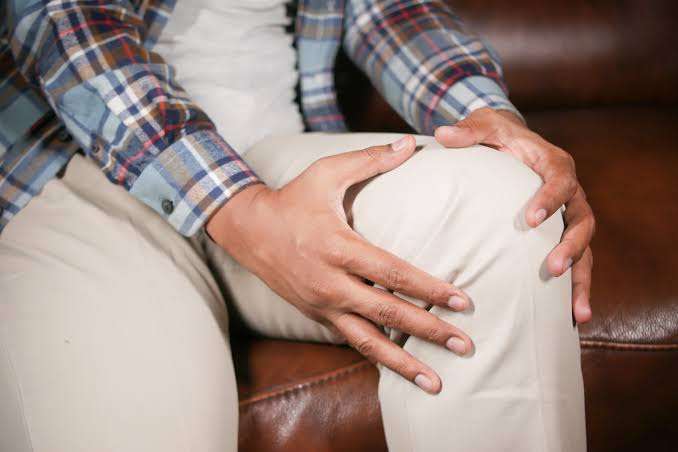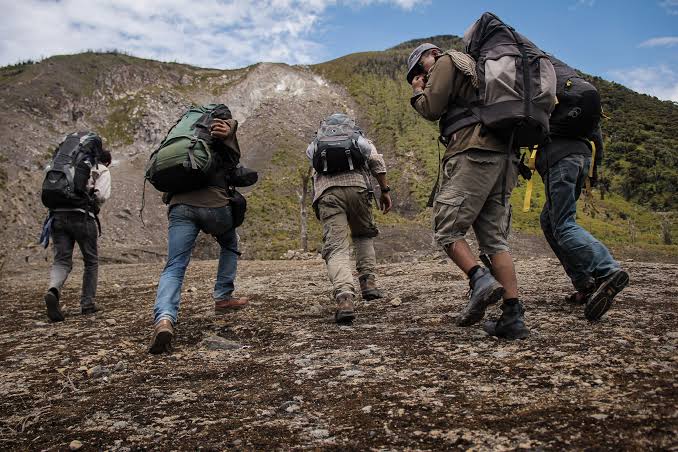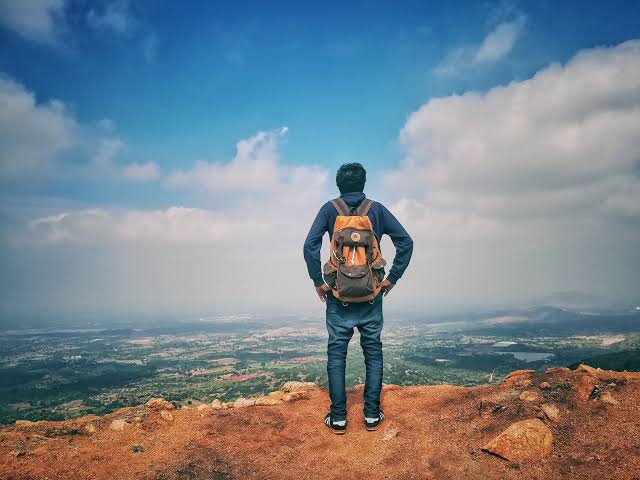Hiking With A Bad Knee : Is It Recommended & How To Do It
I have faced many challenges of hiking with a bad knee so I understand the complexities involved. It’s crucial to address two distinct questions: whether it’s recommended to hike with a bad knee and how to hike with a bad one.
I’ll share some signs to help you decide when to rest or hike, and if you choose to hike, how to do so while managing pain.

While I’m not a medical expert, I’ve learned through experience that hiking with a bad knee can be done with the right precautions. However, it’s crucial to consult a healthcare professional for personalized advice.
If you want to hike with bad knee then opt for easy, well-maintained trails with minimal elevation gain to reduce strain on your knee.
Use trekking poles and brace and support. Carry pain relievers as recommended by your healthcare provider and take breaks to rest your knee during the hike. And try to take shorter steps to minimize impact on your knee joint.
But always listen to your body, monitor your pain, and be prepared to adjust your hiking plans accordingly. Now second question is, is it possible.
Hiking with a bad knee is possible, but it’s not a one-size-fits-all answer. The decision depends on the severity of your condition and your personal pain tolerance.
10 Best Hiking Boots For Very Narrow Feet : Expert Approved in 2023
Hiking With A Bad Knee
If your knee pain is debilitating, it’s advisable to rest and allow it to heal. Consult with a healthcare professional to assess the extent of the issue and follow their guidance.
However, if your knee pain is manageable and doesn’t worsen with movement, hiking cautiously might be an option.
Selection of trails
Selecting for trails with gentle slopes and terrain can make a world of difference. Steer clear of steep inclines and rocky paths that could exacerbate your knee pain.

Always look for trails rated as easy or moderate to minimize the strain on your knee joint. These trails offer a more enjoyable and manageable hiking experience, allowing you to challenge yourself without pushing your limits.
Trekking poles
Trekking poles have been my go-to solution for added stability and support when hiking with knee pain. These handy tools help distribute your weight more evenly and reduce the impact on your knees.

By using trekking poles, I’ve found that I can maintain better balance on uneven terrain and steep descents. They’ve become an essential part of my hiking gear, allowing me to continue challenging myself on the trails while safeguarding my knees.
Knee Braces And Pads
Knee braces and knee pads are both useful tools for managing knee pain, but they serve different purposes and can be used in various situations:

Knee Braces
Supportive Braces
These braces are designed to provide stability to the knee joint. They are often used by people with existing knee injuries or conditions like ligament strains, mild arthritis, or meniscus tears.
Compression Braces
These braces offer compression to the knee area, that helps to reduce swelling and inflammation. They are often used in cases of minor injuries or for preventive measures during physical activities.
Hinged Braces
These provide additional support and protection by incorporating hinges on the sides of the knee. They are often recommended for more severe injuries or during post-surgery recovery.
Knee Pads
Knee pads are protective gear primarily used during activities that involve frequent kneeling, such as gardening, construction work, or some sports like volleyball.
They cushion the knee from hard surfaces, reducing the risk of bruising or abrasions.
They are not typically used for addressing chronic knee pain or providing significant support to the knee joint.
If you’re engaging in activities that involve kneeling and want to prevent discomfort or injuries, knee pads would be more suitable.
Or if the pain is due to an injury or an underlying condition, a knee brace, as recommended by a doctor, can provide the necessary support or compression.
Shorter hikes
Starting with shorter hikes is a smart strategy when dealing with knee pain. Begin with manageable distances that your knee can tolerate without excessive discomfort.

Over time, gradually increase the distance as your knee strengthens and adapts. This gradual progression minimizes the risk of overexertion and ensures that you can continue challenging yourself in a sustainable manner.
Stretch your leg muscles
Prioritizing leg muscle stretches before and after the hike has been a game-changer for me. These stretches help reduce strain on the knee joint by improving flexibility and promoting blood flow.

Focus on stretches for the quadriceps, hamstrings, and calf muscles. Incorporating this routine into your hiking preparation and recovery can significantly contribute to a more comfortable and pain-free hiking experience.
Take breaks
During a hike, it’s also essential to listen to your body. Taking regular breaks is not a sign of weakness but a smart strategy. If you experience discomfort or inflammation in your knee, use these breaks to rest and, if necessary, apply ice to the affected area.

This proactive approach will help you to reduce inflammation and prevent the worsening of your knee pain, allowing you to continue your hike more comfortably.
Better to stop
I’ve learned the importance of being attuned to my body’s signals when hiking with knee pain. If you encounter significant pain or discomfort that doesn’t subside with rest, it’s crucial to make the difficult decision to stop and turn back.

Pushing through severe pain can lead to further injury and complications. Your well-being should always take precedence over any hiking challenge. Be prepared to modify your plans or abort the hike if your knee pain becomes unmanageable.
Plan
When dealing with knee pain, it’s essential to have a contingency plan in place. Always carry a map, communication device, and inform someone of your hiking plans.
This way, you’re ready for a quick exit or, in extreme cases, evacuation if your knee condition worsens during the hike. Prioritizing safety and preparedness ensures you can enjoy the challenge while mitigating risks effectively.
These insights, gained through personal experience, can empower hikers with knee pain to continue pursuing their passion while safeguarding their well-being.
Types of Knee Pains
It’s essential to recognize that not all knee pain should be approached with the determination to push through it. In fact, there are situations where it’s not advisable to hike at all, especially when dealing with serious knee pain.
Serious Knee Pain: The Need for Rest
When faced with serious knee pain, the most crucial step is to rest and allow your body the time it needs to heal.
Serious knee pain can result from various causes, including accidents, overexertion, or underlying medical conditions.
Regardless of the cause, pushing through such pain can exacerbate the issue and lead to more severe injuries.
First-Time Hiker Knee Pain: A Normal Experience
It’s not uncommon for new hikers to experience some degree of knee discomfort, especially if they’re not accustomed to the physical demands of hiking.
This discomfort often arises from the sudden increase in activity and the unfamiliar stress placed on the knee joints. It’s important to distinguish between this initial discomfort and more severe, persistent pain.
Accidental Knee Pain: A Warning Sign
Accidental knee injuries, such as twists, falls, or strains, are red flags that demand immediate attention.
When such an injury occurs, it’s advisable to cease all hiking activities until your knee has reached maximum recovery.
Ignoring the warning signs can lead to long-term damage and hinder your ability to enjoy hiking in the future.
Conclusion
The decision to hike with knee pain should be made with careful consideration of the severity and cause of the pain.
While some discomfort may be a normal part of a beginner’s hiking experience, serious knee pain, whether due to accidents or underlying conditions, warrants rest and recovery as the top priority.


